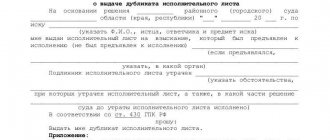A unitary enterprise (UE) is one of the forms of state commercial activity. The main feature is that unitary enterprises are completely owned by the state. It is impossible to divide it or alienate its assets and authorized capital to private individuals. In 2021, a law was passed limiting the creation and activities of such enterprises in Russia. Now all organizations that do not meet the conditions must be liquidated by 2025. Let's look at how changes in legislation affected the functioning of unitary enterprises.
Let's look at what changes in legislation have occurred on this issue.
What does a unitary enterprise mean?
A unitary enterprise is a commercial organization whose property is completely indivisible. The form of ownership is provided for various government agencies and municipalities. The official name should always contain a reference to the founder.
The main and obvious distinctive feature is the indication in the charter of the person who fully owns all the property (state structures or municipal administrations). Consequently, the enterprise itself does not own its property as the owner of a private business. The property entrusted to such a legal entity is in trust management.
The owners of the property of the unitary enterprise can be: the Russian Federation, a subject of the Russian Federation, a specific local government body.
Purpose of the organization
Based on the fact that such companies are state-owned commercial structures, their activities are regulated by the Civil Code of the Russian Federation. Consequently, every unitary organization exists for the sole purpose of making a profit from its activities.
Profits are directed to the budget, from which the activities of government bodies, budgetary areas, social services for the population and other expenses for the needs of the country are provided.
Based on their goals, there are two main types of unitary organizations:
- with the right of economic ownership;
- with the right to manage property.
Unitary enterprises are created to make a profit and to ensure the activities of the state and its bodies
A few more features
A unitary enterprise has several other features of economic activity. Thus, budget financing can be used by such organizations. The state and local governments can provide subsidies, subsidies, and subventions for the development of such enterprises. Funding from the state or local budget is directed to the implementation of programs important for society and for social development.
Having examined the features and examples of unitary enterprises, one can understand the principle, goals of their work, and the need for similar forms of organizing economic activity for the whole society.
Types of unitary enterprises
Division into types is necessary to classify such enterprises according to their purpose and to build a state structure among private commercial organizations. Different types are classified as different forms of control. Consequently, the government gets a flexible and manageable structure in the private sector. After answering the question: “What is a unitary enterprise?” - it's time to figure out its types.
If you are interested in getting acquainted with the list of unitaries in Russia, you can refer to the official data on registered legal entities of various organizational and legal forms - ROSEGRUL.
MUP - Municipal Unitary Enterprises
Municipal unitary enterprises are a commercial legal entity that owns property, but does not have the right to dispose of it, as well as to dispose of income received from the activities of a municipal unitary enterprise.
In general, such enterprises can exist both at the federal and municipal levels. However, most often in practice, municipal unitary enterprises are created by local government bodies of municipalities.
SUE - State Unitary Enterprise
State unitary enterprise by its definition is similar to the term MUP. However, the main difference is who has the ownership rights to the property and the rights to dispose of it. In this case, such powers arise from the state in the person of its state bodies.
State unitary enterprises are the most common form of management of government organizations. Plants, factories, mining, processing, education and everything that provides any services to the population are formed in this form of ownership.
Among government agencies, the state unitary enterprise has become widespread due to the fact that it does not have the right to own property, is obliged to deduct at least 50% of profits annually to the state treasury, manages and is responsible for entrusted property, which is completely indivisible and can belong to only one owner.
FSUE - State Unitary Enterprise of Federal Significance
State unitary enterprise of federal significance. A state-type organization that owns property for the benefit of the state. Typically, a federal state unitary enterprise transfers the management of state property to the leadership of a state unitary enterprise, where the federal state unitary enterprise acts as the sole owner, having the right to individually dispose of the property and the profit received during its use.
Types of enterprises in the Russian Federation
Unitarity Characteristics
There are certain features of a unitary enterprise. They are determined by law. Unitarity has certain characteristics. They determine the features of the functional quality of the enterprise. The main ones:
- The creation of a company (legal entity) occurs after the allocation of the necessary capital by the owner, and not during the merger of several participants.
- The founder retains ownership of the property.
- The property is assigned to the law firm with limited rights. Managers and other officials have the right to dispose of the owner’s funds only in the course of business activities, in the process of operational management.
- The property remains indivisible.
- There is no membership in the authorized capital.
- The governing body is represented by one person.
Classification of unitary enterprises
The classification of UE mainly follows from its types. A limited set of species allows you to better focus on regulating their activities, develop appropriate regulations that describe all aspects of the activity, and accurately organize the work.
The types of units, with methods of operational management, are described above. Some people make the mistake of classifying UEs by property and forms of control. However, this approach is wrong. A unitary enterprise can have only one owner - the state (federal unitary enterprise).
The classification of UE can be made on many grounds: owner, type of activity, goals, etc.
According to the innovations adopted in 2021, the list of possible activities for unitaries has been significantly reduced. Therefore, it will be important to classify UE according to the types of activities established by law:
- UE in the field of culture, art, cinematography and preservation of cultural property;
- UE for carrying out activities outside the Russian Federation;
- Enterprises in the field of natural monopolies
A natural monopoly is a situation in which consumer demand is best met without competition in the product market. Examples of natural monopolies in the Russian Federation can be Gazprom OJSC, Russian Post Federal State Unitary Enterprise, Russian Railways OJSC.
- Unitaries in the field of radioactive waste management;
- Enterprises to ensure the livelihoods of the population in the Far North and similar areas;
- In some cases, which are provided for by regulatory legal acts or by-laws.
If you work with such entities - you are the executor of procurements for government needs or for other reasons, familiarize yourself with the changes in the activities of the Unitary Enterprise. The Federal Law contains the main changes that affected unitary enterprises in Russia.
Signs of unitary enterprises
UE, as an independent form of ownership, has a number of distinctive features by which it can be recognized and classified:
- A unique logo that is registered in accordance with current legislation (letterheads, stamps and other distinctive visual devices);
- Responsible for all property that is at the disposal of higher structures (at the same time, when the owner (superior structure) is burdened with debt, the lower UP is in no way bound by repayment obligations.);
- If a municipal or state enterprise acts as the founder of a unitary enterprise, the assets of this enterprise fully belong to the founder;
- Has a unique seal with the original official logo and necessarily includes the name of the company;
- The unitary enterprise is obliged to carry out the activities indicated by the founder;
- Document flow, as well as accounting and transfer of primary documents to accounting registers, must be carried out directly by the unitary enterprise.
Unitary enterprises have a special organizational form that distinguishes them from other legal entities
Features of state-owned enterprises
Like any other commercial organization, state and municipal enterprises have a charter, which contains detailed information about the rules for the functioning of this business entity.
The charter specifies which government body owns the transferred property.
An individual is appointed as the head of a unitary enterprise, to whom the state authorities will transfer the authority to manage the organization.
As for the sources of formation of SUE property, this is not only property transferred by government agencies.
Other sources may include:
- profit received from commercial activities,
- loans from banking institutions,
- grants and subsidies from the budget,
- donations or voluntary contributions from individuals or legal entities, etc.
The name of a state unitary enterprise must contain the phrase “state enterprise”.
A unitary enterprise of this type does not bear any responsibility for the obligations of the state body that transferred the property for commercial activities.
It does not have the right to open subsidiaries.
Each newly created enterprise is obliged to provide the relevant data to the statistical authorities for its inclusion in the unified state register of enterprises and organizations.
When entering data into the USRPO, the state-owned enterprise is assigned the appropriate codes, including OKPO, OKATO, OKOGU, OKFS, OKOPF.
Why do you need a unitary enterprise?
We can identify the following 3 main reasons:
- Use of state property. A unitary enterprise can only use property that is subject to a privatization ban, that is, it is either state or municipal property. Accordingly, through a unitary enterprise, the state or municipality can make a profit from property that is little used;
- Solving important social issues. The main activities are aimed at solving social issues of the population: from the sale of necessary consumer goods to mandatory services to the population;
- Saving businesses and cities. The state can transfer unprofitable city-forming enterprises to unitary enterprises, which in turn saves the productivity of cities and jobs. It is important to mention that, as a rule, at first such a unitary enterprise lives on subsidies.
As was written above: the main goal for such organizations is to make a profit in the process of their activities. In this way, the state earns funds to support the budget. Such business entities can conduct their activities within the country and abroad. However, wherever they are, their goal is to earn money for the benefit of the state treasury.
Municipal UEs are created to organize the management of the territory. They do not earn money, but serve the population by solving social and vital problems. A fee is charged for such services, but municipal unitary enterprises receive the main subsidies for their work from the state budget.
With the help of the activities of the Unitary Enterprise, the state budget is replenished. However, if you look at the budget plan for 2020-2022. it is clear that the share of such revenues is extremely small compared to oil and gas or state tax revenues.
Reasons, goals of activity
Existing examples of organizing unitary enterprises are united by the reason for their creation. In total, there are three factors that explain the emergence of such forms of management. The reasons for the creation of unitary organizations are as follows:
- It is required to use property in economic activities that cannot be privatized by law. However, such capital can generate income and be used in the creation of goods and services.
- It is necessary to solve certain social problems. For example, sell goods or services to the population at municipal prices, organize commodity or procurement interventions in the field of essential goods.
- Conducting certain areas of business that the public currently needs. Running unprofitable enterprises that produce products important to the population.
There are clearly defined types and purposes for creating unitary enterprises. They determine the essence of such economic units. The activities of such organizations are aimed at solving certain problems that would be impossible to solve on a non-commercial basis. The Civil Code of the Russian Federation (Articles 113-115, Articles 294-297) regulates the legal status of unitary enterprises. This does not address the rights and obligations of employees of such companies. Therefore, such issues are determined by labor law.
If a contribution is made to the authorized capital, it becomes part of the owner’s property. No other employee is entitled to a share of the distributed profits. The charter clearly states who exactly owns such an enterprise and who has the right to its property.
It is worth noting that this form of organization of economic activity is responsible for its obligations with all its capital. The boss manages all processes at such an enterprise. He is appointed to the position by the owner or a body authorized by him.
Rights of the UE
The property is provided under the right of operational management, which requires special care and strict reporting for each action. The charter of unitaries contains provisions obliging the enterprise to unquestioningly obey the decisions of the founder.
The only right that a state unitary enterprise has is to carry out activities aimed at generating profit in favor of the sole owner. As a rule, the only owner is a federal state unitary enterprise, i.e. state.
Interestingly, the provisions of accounting laws do not apply to federal unitary enterprises in Russia.
Other aspects of operational management
It is worth keeping in mind that the government structure does not have the right to dispose of movable and immovable property complexes unless there is special permission from the owner. The corporate name of a structure founded in accordance with the right of operational management must include an indication that the institution is considered state-owned. The Russian Federation, its subject or municipal-type entity is liable for the obligations of the state structure in the event of insufficiency of its property complexes. A government institution may be liquidated or reorganized in accordance with a decision of the government of the country, a specific entity or a local government body.
Responsibility of state and municipal unitary enterprises
The organization carries out commercial activities in accordance with the charter of the unitary enterprise. Responsibility stems from the main feature - to earn profit for the benefit of the state treasury, using state property.
Since capital is formed from budget assets, the company is responsible to the budget for each of its actions. Otherwise, the UE operates in accordance with the current legislation of the Russian Federation, as well as the Civil Code, regardless of the types of state-owned enterprises.
If we are talking about civil or other liability not to the budget, but to legal entities or individuals, then in this case the basic provisions of the law for a specific type of obligation apply. For example, if procurement provisions are violated, the UP will be held liable within the framework of the concluded contract.
The responsibility of the management company to individuals and legal entities is determined by the general rules of law
How to establish a unitary enterprise
The document flow in such organizations is very similar to the document flow of private commercial forms of ownership. The main documents are:
- Decision from the Government of the Russian Federation or other federal bodies on the establishment of an organization;
- Charter
In exceptional cases, the decision may be made by municipal organizations. Consequently, local government bodies will be the only participant (founder) of the newly formed state-owned enterprise. A municipal unitary enterprise can initiate the creation of a unitary enterprise only for the purpose of serving the population of the territory entrusted to it, as well as within the framework of its own powers.
The newly formed state enterprise carries out its actions only on the basis of the charter. This document is the main set of provisions and operating rules of the established organization.
Brief process of creating unitary enterprises in the Russian Federation
Charter
Only various departments, ministries and other government structures can approve the Charter of the Unitary Enterprise. It must contain complete information about the authorized capital (fund), goals, property entrusted to management, and the owner of the property.
The charter must contain the following information:
- full and abbreviated name;
- location of the unitary enterprise;
- goals, subject and types of activities;
- information about the owner of the unitary enterprise;
- name of the main body of the unitary enterprise;
- the procedure for appointing the head of the unitary enterprise, as well as the procedure for concluding an employment contract with him and other data established by separate acts of legislation.
The charter of a unitary enterprise contains basic information about the organization
Number of participants
The number of participants is strictly limited - the only participant is the founder. The founder owns all property, determines the direction of activity and the internal form of work, approves accounting reports and adjusts operational management, if necessary. The number of employees is unlimited. In this regard, UE is similar to private commercial firms.
The inclusion of an organization in various companies is carried out only on the basis of a decision of the sole founder, a higher organization.
Charter capital
The authorized capital is a distinctive feature of any enterprise. The sum of all monetary assets and property for which an organization is responsible for its activities. The size of the authorized capital is formed when the unitary enterprise is created, and is also indicated in the Charter. Subsequently, the size may change by decision of the founder, which must be reflected in the new version of the charter and other documents.
The size of the authorized capital of the UE cannot be less than 500,000 rubles. Municipal entities have an exemption; their authorized capital must be at least 100,000 rubles.
Laws may determine the types of property at the expense of which the authorized capital of a state or municipal unitary enterprise cannot be formed.
Forms
Considering examples of unitary enterprises in Russia, several forms of such enterprises should be noted. They are usually divided into three groups depending on their subordination:
- SUE is a state unitary enterprise. In this case, the owner is the subject of the Russian Federation.
- MUP is a municipal unitary enterprise. The owner is the subject of the municipality.
- FSUE is a federal state enterprise of unitary type.
Municipal, federal and state business associations of this type differ in the size of their authorized capital. For municipal (city and regional) unified companies, this figure is at least 1000 minimum monthly wages (minimum wages). For a state-owned company, the minimum authorized capital is 5,000 minimum wages.
Existing examples of unitary enterprises and organizations in Russia operate according to one of two possible schemes. The following activity options are available:
- On the right of economic management. They are created primarily to create certain goods or provide services to the population.
- On the basis of operational management (state-owned enterprises).
Commercial forms of organization of unitary enterprises have the right to enter into various transactions and rent out part of unused premises. State-owned enterprises have the right to dispose of property only with the consent of the owner.
There are several other forms of unitary enterprises. They differ in the characteristics of their organization and scope of activity:
- private;
- production;
- agricultural;
- utilities.
How is the property of a unitary enterprise formed?
The property of the enterprise cannot be in its ownership. This is the most important distinguishing feature of this form of ownership. And also, the main disadvantage would be if the form of ownership were used in the private sector.
Example: municipal organizations do not own houses and other buildings entrusted to management. The owners can be housing associations, other enterprises, and government agencies.
Therefore, there are two types of property management rights:
- operational management;
- economic management.
The property of the unitary enterprise is under the rights of operational management or economic management
On the basis of economic management, state unitary enterprises and municipal unitary enterprises can dispose of the property entrusted to management. An example of a unitary enterprise is described above, when a municipal unitary enterprise does not own housing complexes and other buildings, but is engaged in their maintenance and is responsible for them.
A state organization with operational property management - in simple words, this is a unitary-type enterprise that can conduct economic activities and dispose of property, including income received in the course of the activities of a state-owned enterprise, only with the permission of the owner of this property, a higher structure.
Sources of formation of UE property
Savicheva Olga
Corporate accountant, practicing economist
Ask a Question
If we structure all the available information, I can identify the following types (sources) of formation of the property of the unitary enterprise: Transferred to management; Other property transferred by decision of the sole founder; Profit received in the process of economic activity; Credit and borrowed funds; Depreciation deductions; Subsidies from the state budget; Dividends and income from business entities in which the UE has a share; Voluntary donations from citizens and other organizations; Other sources of income permitted by law
Features of the legal capacity of the UE
According to Art. 3 laws, UP have special legal capacity. It is necessary that all relations with other organizations meet the goals of the activity and its subject.
It can be created either for a certain period or on an ongoing basis. Like other organizations, it is subject to the state registration procedure, after which legal capacity arises.
UP, with the exception of state-owned ones, does not have the right to conduct activities not related to the creation process until the authorized capital is fully formed.
Rules for participation in other organizations
As a general rule, a PM can participate in both commercial and non-profit organizations. However, to implement this possibility, the consent of the founder will be required. It will also be needed in cases related to the disposal of shares and contributions in the authorized and share capital, as well as shares.
A separate restriction concerns the impossibility of participation of the UE in credit institutions.
Features of the responsibility of the UE
According to the general rules, the UE is not liable for the obligations of the founder, but is liable with its property for its own.
The founders of State Unitary Enterprises and Municipal Unitary Enterprises are not responsible for its obligations. However, the law provides for an exception. The founder bears subsidiary liability in cases where the bankruptcy of the organization is caused by his actions.
In the case of state-owned enterprises, the founders bear subsidiary liability in situations where the organization’s property is not enough to satisfy the claims of creditors.
How is the profit received distributed?
Different types of UE differ in the basis on which financial activities are carried out. Such an organization can distribute profits only after full payment of taxes and other obligatory payments.
After mandatory payments and taxes, funds are collected in special incentive funds. From where they can be sent to the authorized capital or sent in the following directions:
- Modernization of equipment and production;
- Studying the latest developments;
- Development of the current staff and attraction of highly qualified specialists;
- Providing (support) for various government programs.
Distribution of UE profits is carried out only within the framework of the law
Creation, reorganization and liquidation
How is a unitary enterprise created? The creation of a unitary enterprise is carried out on the basis of constituent documents, a state structure that is higher than the enterprise being created. Such a government structure is recognized as the owner of the new unitary enterprise. The list of constituent documents is described above.
After creation, the company forms an authorized capital, the size of which is described above in the corresponding section. Then, the company is assigned a manager who will manage the organization.
The reorganization of unitaries is carried out on the basis of the provisions of the law. A unitary enterprise can be reorganized by decision of the owner of its property in the manner established by industry legislation. It is important to note that reorganization will not recognize a change in the owner of the property of the unitary enterprise. This is due to the fact that reorganization involves a structural change in the legal entity.
Reorganization is possible in the following forms:
- Merger of two or more unitary enterprises;
- Joining a unitary enterprise;
- Division of a unitary enterprise;
- Isolation of one or more UE from the UE;
- Transformation into another legal entity of a different organizational and legal form.
Reorganization process
The liquidation of unitaries is initiated by the owner, founder, and can also be initiated by a court decision. First, a decision is issued. Then, all taxes and duties are paid, employees are fired, except for the manager. A liquidator is appointed to the enterprise, the organization undergoes inspections and receives the relevant acts. The unitary enterprise is liquidated, documents on all activities of the organization are transferred to the archive.
Liquidation entails the termination of all existing rights and obligations of a legal entity, including obligations to third parties.
About the reorganization
Savicheva Olga
Corporate accountant, practicing economist
Ask a Question
We have already said in the article that certain changes have taken place in the legislation regarding unitaries. This is due to the fact that the state seeks to increase competition in product markets. This does not apply to natural monopolies, since this is the most effective way to manage specific sectors of the economy (for example, transport). Until 2025, unitary enterprises that violate the provisions of antimonopoly legislation must be reorganized or liquidated.
The founders of unitary enterprises, represented by federal executive authorities, authorized state authorities of constituent entities of the Russian Federation, local governments, first of all, need to analyze the activities of the enterprises they created for compliance with current antimonopoly requirements. As we noted earlier, most unitary enterprises operate in areas with fairly developed competition - in heat supply, water supply, sanitation, housing management, trade and services. In this regard, the owner of the property of a unitary enterprise will sooner or later have to make a certain decision - on the liquidation or reorganization of the enterprise, since if appropriate measures are not taken within the period established by law, such enterprises will be liquidated in court at the request of the antimonopoly authority.
Let us consider in more detail the procedure for liquidation, possible ways of reorganizing unitary enterprises and the procedure for privatizing a unitary enterprise.
LIQUIDATION OF A UNITARY ENTERPRISE
In accordance with Art. 35 of the Federal Law of November 14, 2002 No. 161-FZ “On State and Municipal Unitary Enterprises” (hereinafter referred to as Law No. 161-FZ), a unitary enterprise can be liquidated by decision of the owner of its property.
Liquidation of a unitary enterprise entails the complete cessation of its activities without the transfer of rights and obligations through succession to other persons. The process of liquidating an organization is regulated by the Civil Code of the Russian Federation and Law No. 161-FZ and consists of a sequence of steps presented in Figure 1.
Figure 1. Process of liquidation of a unitary enterprise
The owner of the property appoints a liquidation commission, and from that moment on, the powers to manage the affairs of the unitary enterprise are transferred to it, including the right to act on behalf of the liquidated enterprise in court.
If, during the liquidation of a state or municipal enterprise, it is established that it is unable to satisfy the demands of creditors in full, the chairman of the liquidation commission of the enterprise must apply to the arbitration court with an application to declare the unitary enterprise bankrupt.
In general, the procedure for liquidating a unitary enterprise is similar to the procedure for liquidating any business company, since its main stages are regulated by the Civil Code of the Russian Federation (Civil Code of the Russian Federation). But the procedure for reorganization and transformation of a unitary enterprise has its own characteristics.
WAYS TO TRANSFORM A UNITARY ENTERPRISE
It is possible to transform state and municipal unitary enterprises in accordance with the legislation on privatization. Article 13 of the Federal Law of December 21, 2001 No. 178-FZ “On the privatization of state and municipal property” (hereinafter referred to as Law No. 178-FZ) specifies methods for privatizing state and municipal property. One of the methods of privatization is the transformation of a unitary enterprise into a joint-stock company or into a limited liability company.
The form of business company into which a unitary enterprise will turn primarily depends on the size of the book value of the assets of the unitary enterprise. The minimum amount of authorized capital for business companies established by law is: for a public joint-stock company (PJSC) - 100,000 rubles, for a non-public joint-stock company (NPJSC) and a limited liability company (LLC) - 10,000 rubles. At the same time, I would like to draw your attention to the fact that a public joint-stock company is one whose shares are publicly placed through open subscription under the conditions established by securities laws.
The organizational form into which the unitary enterprise will be transformed is determined by the founder independently.
The possibility of transformation into an LLC is not provided for all privatized enterprises. In addition to the size of the authorized capital, there are other criteria that must be taken into account when deciding on the form of reorganization of a unitary enterprise.
Privatization by transformation into an LLC is possible provided that the unitary enterprise has characteristics by which it can be classified as a small and medium-sized enterprise. These criteria are established by Federal Law No. 209-FZ of July 24, 2007 “On the development of small and medium-sized businesses in the Russian Federation” and Decree of the Government of the Russian Federation of April 4, 2016 No. 265 “On the maximum values of income received from entrepreneurial activities for each categories of small and medium-sized businesses."
The limit values of the criteria for classifying business entities as small and medium-sized businesses are presented in Figure 2.
Figure 2. Limit values of the criteria for classifying enterprises as small and medium-sized businesses
- Thus, based on the above norms, we can conclude that privatization by transformation into a limited liability company is applicable for unitary enterprises with an authorized capital exceeding 100 thousand rubles, an average number of up to 250 people and revenue from the sale of goods (works, services) for three calendar years preceding privatization no more than 2 billion rubles.
PROCEDURE FOR PRIVATIZATION OF A UNITARY ENTERPRISE
Privatization of a unitary enterprise through transformation includes the following stages.
At the first stage, the unitary enterprise is included in the forecast privatization plan (program) for the corresponding calendar year.
From the date of approval of the privatization program, the activities of a unitary enterprise are limited by law. In accordance with paragraph 3 of Art. 14 of Law No. 178-FZ, from the date of approval of the privatization program and until the day of state registration of the created business company, a unitary enterprise without the consent of the owner of its property has no right:
- reduce the number of employees;
- carry out transactions (several interrelated transactions), the price of which exceeds 5% of the book value of assets as of the last reporting date or more than 10 times the minimum size of the authorized capital of a state unitary enterprise established by federal law, as well as transactions related to the possibility of alienation of property.
At the second stage, the book value of the assets of the unitary enterprise subject to privatization is determined . It is defined as the sum of the value of its net assets according to the interim balance sheet and the value of land plots minus the book value of objects that are not subject to privatization as part of the property complex of a unitary enterprise. To determine the cost, an inventory is carried out.
Based on inventory data, an audit report, as well as documents on land plots provided to a unitary enterprise, a transfer act is drawn up. Moreover, in the case of privatization, the transfer act is drawn up at the initial stage of privatization - even before a decision is made on it. After all, on the basis of Art. 11 of Law No. 178-FZ, it is in the transfer act that the composition of the property complex of a unitary enterprise subject to privatization is determined.
The transfer act specifies all types of property of the unitary enterprise subject to privatization.
At the third stage, a decision is made on privatization , which indicates:
- the composition of the property complex of a unitary enterprise subject to privatization, including buildings, structures, structures, equipment, inventory, raw materials, products, rights of claim, debts, rights to designations that individualize the enterprise, its products, works and services (company name, trademarks, service marks), and other exclusive rights, indicating their book value, and also includes information about land plots subject to privatization as part of the property complex of a unitary enterprise;
- a list of objects that are not subject to privatization as part of the property complex of a unitary enterprise;
- the size of the authorized capital of the company created through the transformation of a unitary enterprise;
- the number, categories and par value of shares or share of the contribution that will belong to a member of the company - a public legal entity (of the Russian Federation, a constituent entity of the Russian Federation or a municipal entity).
At the fourth stage, the charter of the business company created in the process of transformation is approved. Next, the documents are sent to the registration authority to enter the relevant information into the Unified State Register of Legal Entities.
The business company created as a result of the transformation is considered the legal successor of the unitary enterprise, and, by virtue of universal legal succession, all rights and obligations of the reorganized enterprise are transferred to it on the basis of a transfer deed.
- Summarizing the above, we can conclude that the transformation of a unitary enterprise into a joint-stock company or limited liability company can be considered as one of the five possible forms of reorganization of legal entities provided for in Art. 57 of the Civil Code of the Russian Federation, and at the same time a method of privatization of state and municipal property.
The owner of the property of a unitary enterprise already now, taking into account all the circumstances, needs to analyze the work of existing unitary enterprises and make an appropriate decision either on liquidation or reorganization of the unitary enterprise in the manner prescribed by law, choosing the necessary organizational and legal form of the transformed enterprise.
The BFT company has successful experience in organizing and conducting consultations and training events, including explaining current changes in legislation in the field of state and municipal property management. We offer a range of services, including: consultations on issues of property and land relations, holding training seminars, webinars and other events. Our partners will always be able to receive high-quality and up-to-date information on issues of interest and learn about the latest innovations in legislation.
We are ready to provide more detailed advice on this topic at any time convenient for you. You can ask your question on the BFT Expert project page.
Examples of unitary enterprises in Russia
State unitary enterprises operate in completely different industries. Before their creation, the government verifies the right of a particular structure to create a unitary enterprise. For example, in the transport sector: road organizations that lay and maintain roads and roadside areas.
In the sphere of municipal organizations - housing and communal services and other service enterprises.
Plants and factories are a separate area of application of this form of ownership. This is where its full potential is maximized. Since these enterprises process raw materials, produce various goods, including strategic goods, and also serve the population.
The most famous unitary enterprises in Russia are FSUE Russian Post, FSUE Mosfilm, FSUE Goznak.
Advantages and disadvantages
In fact, it is difficult to highlight the pros and cons of a unitary enterprise due to the fact that these enterprises can only be established by the state with its own structures. This form of ownership is not available to the private segment. So, we can highlight the following pros and cons.
The advantages include:
- An independent enterprise that carries out economic activities under the supervision and protection of higher structures;
- May qualify for various subsidies and support from the state;
- Generates profit from the property under management;
- The bankruptcy procedure is practically impossible, since the owner (the state) will carry out the financial rehabilitation of the enterprise;
- Privileged position within the framework of procurement procedures (in procurement for state and municipal needs, contracts contain fairly strict frameworks for procurement winners or other performers).
The disadvantages include:
- Strict control by higher organizations, which fully regulate and regulate all activities of the UE;
- Issues of reorganization are agreed upon with the owner of the property;
- There is no possibility of conducting free commercial activities;
- Most of the profits are transferred to the state budget.
Unitary enterprises have significant advantages and disadvantages
The difference between MBU and MUP
Municipal unitary enterprises are created, according to their charters, for commercial purposes.
In contrast, a budget organization does not have a commercial orientation. They exist only due to the budget allocated to them and are never created on a commercial basis.
This type of organization in Russia is characterized by increased stability in the face of various crises and the collapse of commodity-market relations. This is caused by the virtual absence of competition from other market entities, since their areas of activity are specific.
The state exercises constant supervision over its institutions and, if necessary, provides them with support. The institutions themselves demonstrate stability in the remuneration of their members. This legal status sets them apart and attracts new labor.
FAQ
In fact, the following questions are popular from the private segment.
Is it possible to transform a unitary enterprise into an LLC or another form of ownership?
The Federal Law “On State and Municipal Unitary Enterprises” states that a unitary enterprise can also be reorganized by transforming it into another legal entity, another organizational and legal form. However, these cases are clearly named in other federal laws.
Therefore, a unitary enterprise can be transformed into an LLC, as well as into any other organizational and legal form of a legal entity. That is, in fact, with such a reorganization, the property of the unitaries is privatized.
Can a unitary enterprise provide charitable assistance?
Yes. With the permission of a higher structure, they can provide and support other farms. Moreover, the practice of assigning weaker farms and budgetary organizations to strong enterprises, factories and other structures is widespread.
However, the provision of assistance from the UP is strictly controlled by higher structures so that it goes strictly for its intended purpose.
Unitary enterprises can be reorganized and liquidated as other legal entities
Federal unified enterprises: list of the most famous
Examples of state and municipal unitary enterprises operating in our country are varied. Almost all residents of our country are familiar with them. The list of federal state unified companies is quite extensive. These are large companies that are engaged in strategically important activities. It is important for all residents of our country. The most famous examples of federal state unitary enterprises are:
- "Space Communication";
- "Goznak";
- "Communication-Security";
- passport and visa service;
- "Post office";
- "Security";
- NPP VNIIEM;
- "Mosfilm"
- Russian television and radio broadcasting communications;
- All-Russian State Television and Radio Broadcasting Company;
- Central Scientific Institute of Mechanical Engineering;
- other.
These organizations have different subordination. However, they are united by a strategic purpose in different sectors of activity. Financing of such companies is carried out at the all-Russian level. This is the highest level of submission.
Why are unitary enterprises at the federal level created? For example, the activities of the Federal State Unitary Enterprise “Space Communications” are aimed at providing satellite technologies to the Russian Federation. The company provides Internet access and communication services for large corporations, medium and small companies and private users.
FSUE Goznak operates with the goal of developing and researching state signs. It belongs to the Ministry of Finance of the Russian Federation. The company produces orders, coins, as well as various official documents.









